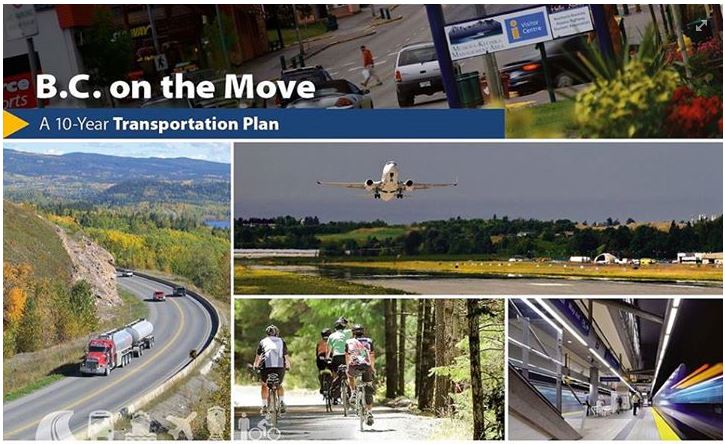How fast has traffic been growing on the Lions Gate Bridge? (a) 0.1 percent per year (b) 2 percent per year (c) 4 percent per year
.
Is it a trick question if I tell you it’s a trick question? Because the answer is that traffic has been dropping on the Lions Gate Bridge – and has been for close to a decade.
As Fraseropolis wrote in September:
I have been in traffic jams on the North Shore recently, and they can be severe. But what do the numbers suggest? … New bridge traffic caused by localized population growth is more than offset by a decline in overall bridge traffic. Ministry of Transportation tables show a steady decline in weekday traffic volumes on the North Shore bridges since 2005. The population is ageing. People are working from home, and shopping from home. On the Lions Gate, the reduction in volume was 4.4 per cent on average from 2005 through 2013; on the Second Narrows, average weekday traffic volumes dropped by 2.8 per cent for the same period. This pattern can be observed across the region. … A colleague who commutes across the Lions Gate almost every day said that North Shore residents look forward to the construction of a third Burrard Inlet vehicle crossing. This is not going to happen. I have no financial or emotional stake in this; but as noted in a previous post on this site, politicians in the City of Vancouver rejected even the addition of a single lane to the Lions Gate bridge in the 1990s. Resistance to the concept would be more intense today.
Right you are, Fraseropolis. The resistance would be intense – but that doesn’t mean the Ministry of Transportation wouldn’t try. They are where Washington State DOT was not that long ago – defying data, projecting an ever-rising growth line into the future, and, when it comes to vision, arriving at this:
.
.
Looking ahead to the next 10 years, here are some highlights of key strategies and actions being explored for B.C. on the Move:
Continuing to expand and improve highway capacity, bridges and side roads














Comments in this post are right on! We were dismayed even 14 years ago when the then downtown transportation plan had begun its work. Vehicular traffic to the downtown was almost exactly the same as 30 years previously, including across the Lions Gate Bridge. Congestion on the bridge itself was less than 30 years previously, mostly due to expansion of the approaches at both ends. Walking to work in the downtown had expanded immensely thanks to 000s of more residents. Bus trips were the same as 30 years previously, but SkyTrain meant that overall transit ridership to the downtown had increased considerably.
Let’s hope that the politicians in BC start to comprehend these trends. I know their officials and engineers at the Ministry of Transportation understand all this. Just not the politicians. And the Ministry staff have had socks stuffed in their mouths.
Cursory look at the data seems to show weekday vehicle traffic on a slight rise since 2010. Hope this isn’t indicative of what the next 10 years will look like. Thanks for the post.
LOL. The doctors, lawyers, and business people who used to live in West Van and commute to downtown have all be gentrified out by Asian investors and empty houses. No wonder traffic on the bridge is shrinking. 🙂
I don’t generally think of West Vancouver as being a development hotbed – how much has its population grown? i.e. an increase can’t come from nowhere.
As for North Vancouver, much of its development seems to have been focussed on areas near to Lonsdale’s Seabus, so for those headed to downtown Vancouver, that would be a logical choice.
If a new crossing is to be built – it would be a replacement. Didn’t the Province’s agreement with the Vancouver Park Board to widen the causeway mandate decommissioning of the Lions Gate Bridge to general traffic by 2040?
Replacement bridge referenced here:
http://community.seattletimes.nwsource.com/archive/?date=20000127&slug=4001572
decommissioning to general traffic again here:
http://www.richmond.ca/__shared/assets/061101_item11676.pdf
Hayden, 2010 was the anomaly year because of the Olympics, and the month that downtown was essentially closed. It should be removed from the dataset, and the steady downward trend is clear.
I have used the “Lions Gate argument” in discussions about the fate of the Pattullo Bridge. detailed here:
http://nwimby.blogspot.ca/2012/04/more-i-discuss-pattullo-issue-with.html
and here:
http://nwimby.blogspot.ca/2012/04/lions-gate-solution-part-2.html
I think the main difference between Lions Gate and Patullo is that Lions Gate carries a peak flow only one way with rush hour. Patullo may carry loads both ways – plus Patullo carries trucks, which are banned on Lions Gate. Trucks tend to move slowly up bridge ramps (i.e. Surrey side), which may necessitate passing lanes.
Bridge traffic may be decreasing, but the District of North Vancouver is planning and building for more cars. Keith Road at Lynn Creek will go from currently 2 lanes to 5 lanes, plus a new highway ramp in the future. No bus lanes, minimal bike lanes (painted). As the District says on their project webpage, “the new bridge and roadway will enable a more efficient commute”.
http://www.dnv.org/article.asp?a=5943&c=22
I live on the North Shore and this doesn’t reflect my experience. Rush hour traffic on the Iron Workers Memorial is much worse than five years ago. If total traffic is down does this reflect a change in traffic patterns?
It’s like Yogi Berra once said: “nobody goes there anymore – it’s too crowded.”